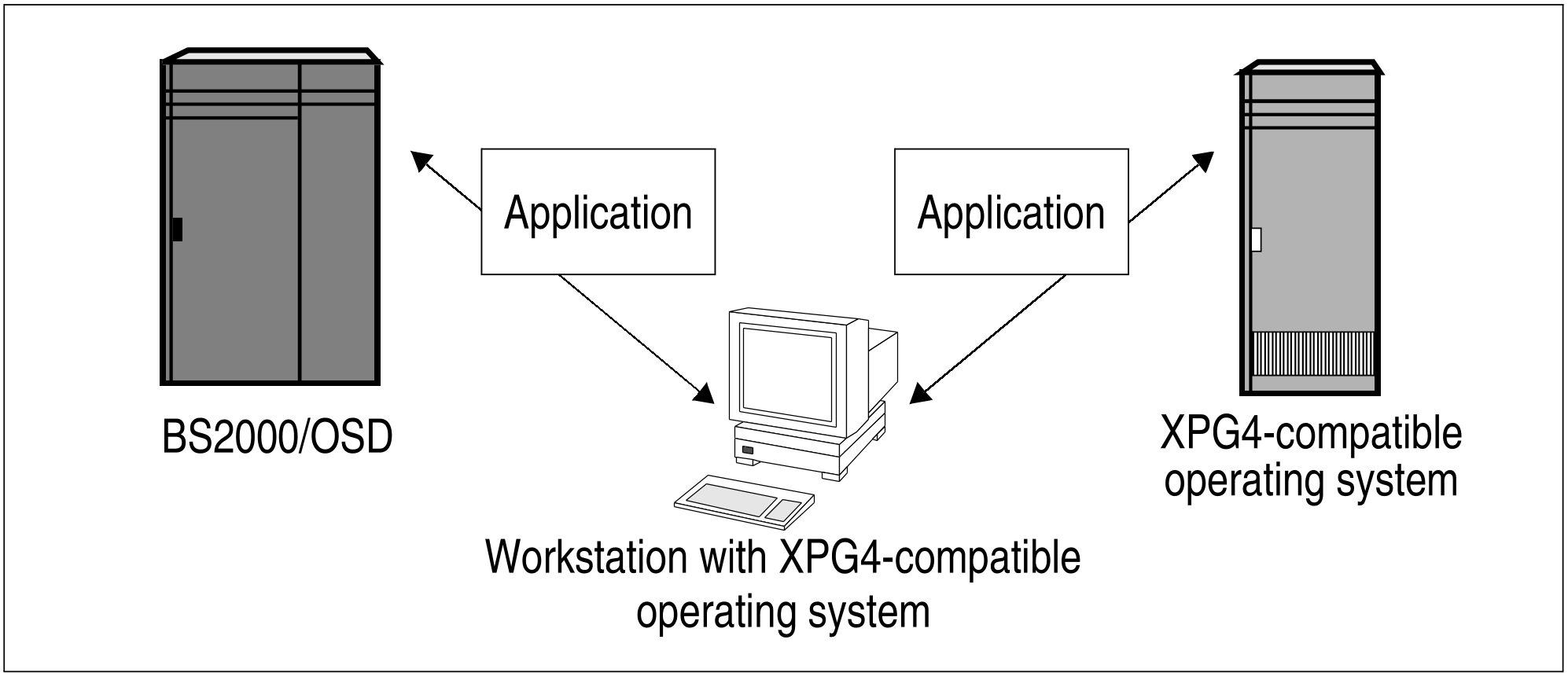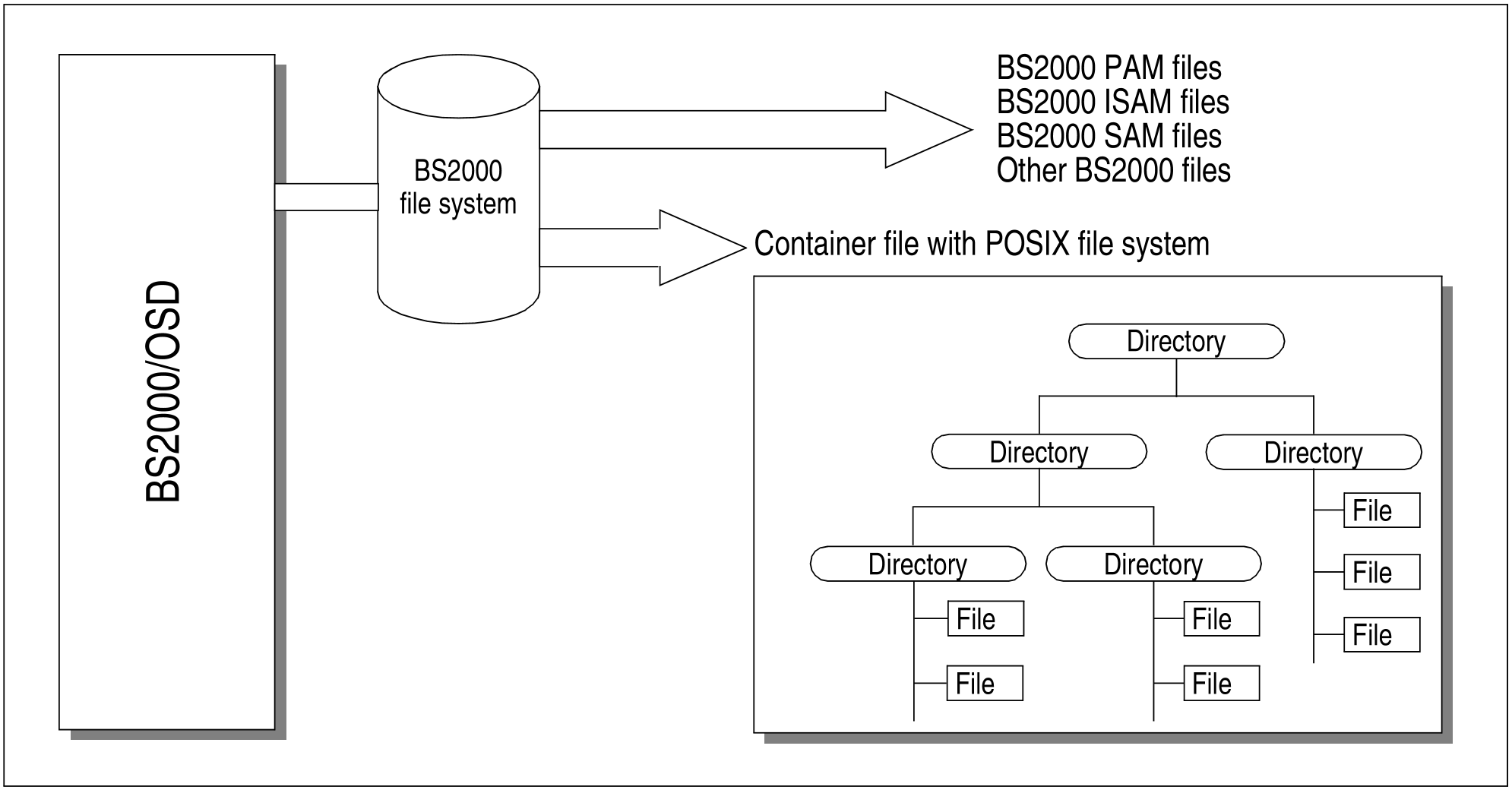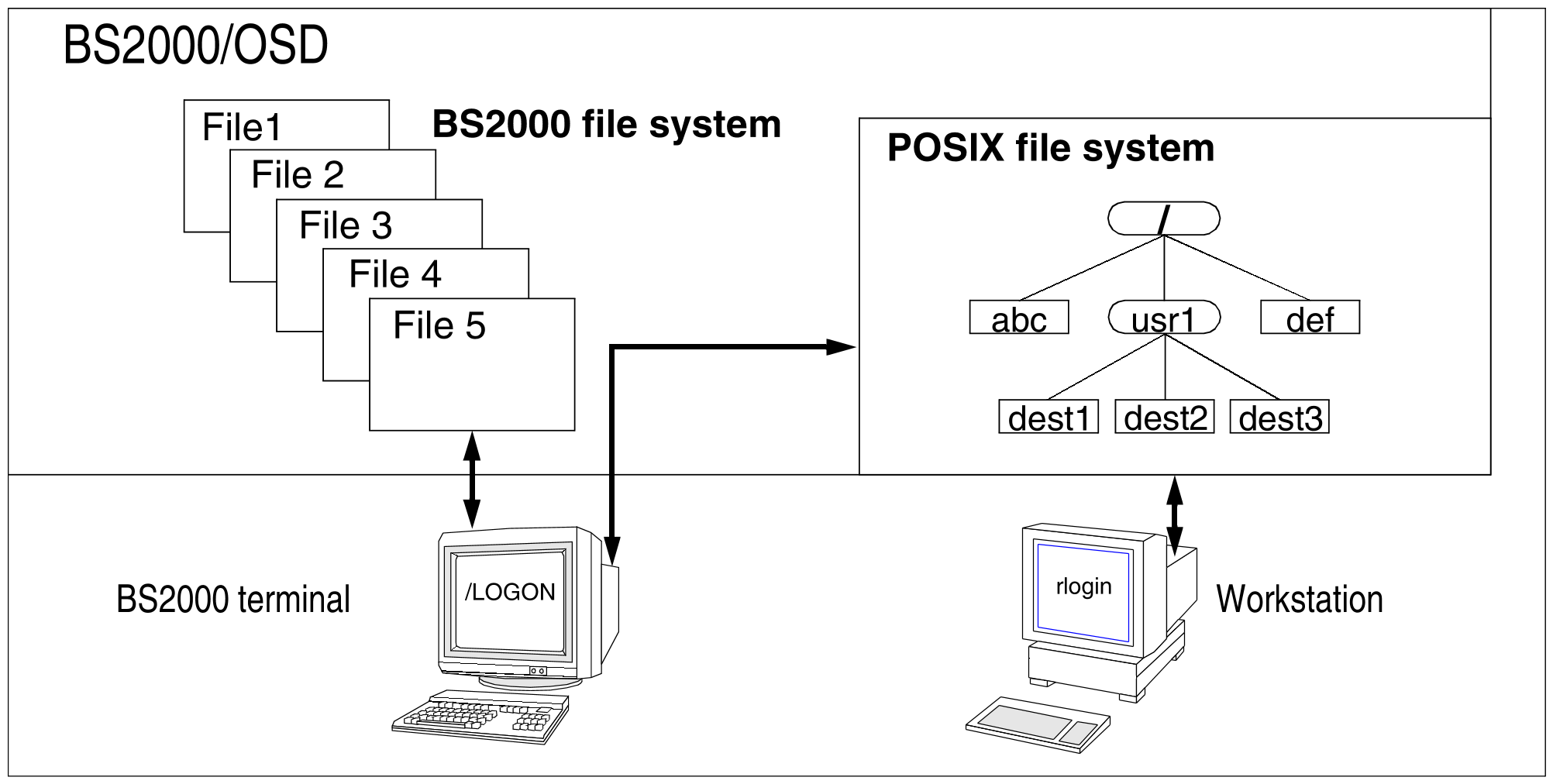The POSIX standard offers you the following advantages:
Portability of application programs
Interoperability of application programs
Working with hierarchical UNIX file systems
BS2000 as a server
Distributed data storage
Distributed processing
Common development tools
These advantages are described in more detail below.
Portability of application programs
Application programs which are written in accordance with the POSIX interfaces can operate on all XPG4-compatible operating systems and hardware platforms. Portable application programs can operate as smoothly in BS2000 as, for example, on a UNIX platform.
Figure 4: Porting an application to any XPG4-compatible system
Data and files from application programs in ASCII code must be converted to EBCDIC before being used with POSIX (see “Copying and converting files”).
Interoperability of application programs
Application programs which operate under different XPG4-compatible operating systems can exchange data with each other if the file formats match (see “Copying and converting files”).
Working with hierarchical UNIX file systems
The POSIX file system extends BS2000 to include a hierarchically structured file system. A POSIX file system is a container file in BS2000 with the structure of a UNIX file system (UFS). The POSIX file system consists of files (POSIX files) and directories (see “POSIX file system”). POSIX files can be created and processed by POSIX users.
Figure 5: Supporting POSIX file systems with BS2000
With the aid of the software product NFS (Network File System), local POSIX file systems can be mounted in remote computers, and remote UFS file systems in a local POSIX file system.
bs2fs file systems enable direct access to BS2000 files from POSIX (see the "POSIX BS2000 filesystem bs2fs" [2] manual.
BS2000 as a server
BS2000 can be used as a pure data server. In this case, the data (databases and files) is located on a BS2000 computer. The applications are stored on another computer. This is useful in the case of a low number of data accesses per transaction.
When used as a server for applications and data, the applications and data are located on the same BS2000 computer. This is useful if the data is accessed frequently per transaction.
As a file server, BS2000 offers the capacity, data access speed, and data access security of its memory subsystems.
As a backup server, BS2000 can store data resources from the network on its storage media, and use the HSMS protection mechanisms which are available there (see the HSMS manuals [21] and [22]).
As a print server, BS2000 makes its printers available via a distributed SPOOL and printing system (see the SPOOL manuals [32] and [33]). As a result, users of UNIX systems workstations can print their print jobs on BS2000 printers quickly and economically.
POSIX and the World Wide Web (WWW)
The following products are available for connecting BS2000 to the World Wide Web:
APACHE (BS2000) is the name of the webserver on BS2000. APACHE (BS2000) is a port of the Apache World Wide Web server of the Apache Group.
The communications software openNet Server provides the framework for the openNetworking in BS2000 and is further divided into products, such as DCAM and BCAM.
interNet Services comprise FTP, TELNET, DNS, NTP, OPENSSH, SMTP Server and IMAP/POP3 Server. These products are ports of corresponding standard internet products which have been customized for the specific requirements of BS2000.
JENV is the BS2000 environment for JAVA.
BS2000 applications can also present themselves with their data in the Internet. Direct access to the applications is implemented via a Common Gateway Interface (CGI), which is provided via the WWW server in BS2000. These applications may run with or without transaction control via openUTM and can access any stored BS2000 data.
The BS2000 security functions ensure that not all data is accessible to all users.
Bringing BS2000 applications into the WWW
Existing BS2000 applications can be made WWW-compatible with little effort. The product WebTransactions is thereby used to convert alphanumeric user interfaces (masks) into HTML format and pass them to the WWW browsers for output. Further information on this can be found in the WebTransactions manuals [38] and [39].
The number of offered host connections is being increased continuously. Special connections are currently offered by Fujitsu as project services with the necessary connection technology.
An overview of the documentation on WebTransactions can be found in the internet under https://bs2manuals.ts.fujitsu.com.
Select: Software > openSEAS > WebTransactions and then the product group or product you require.
Distributed data storage
With distributed data storage, you can work with both local and remote data. This means that you can position the data volumes at the most cost-effective location in a computer network.
You can access BS2000 files from a workstation once the BS2000 files have been copied to a POSIX file system. You can also copy BS2000 files to a POSIX file system and load them on a workstation.
Figure 6: Distributed data storage
Distributed processing
With distributed processing, you can optimize use of the computing capacities. For this type of client/server architecture, processing takes place at the most suitable location. For example, certain processing operations such as input checks and calculations can run on the workstation (client), while database accesses and computer-bound evaluations run on the BS2000 computer (server).
Common development tools
UNIX system based development tools such as tools subject to the Gnu Public Licence (GPL) can be ported to POSIX without difficulty. This enables the creation of application programs that can run on UNIX systems and on POSIX.



